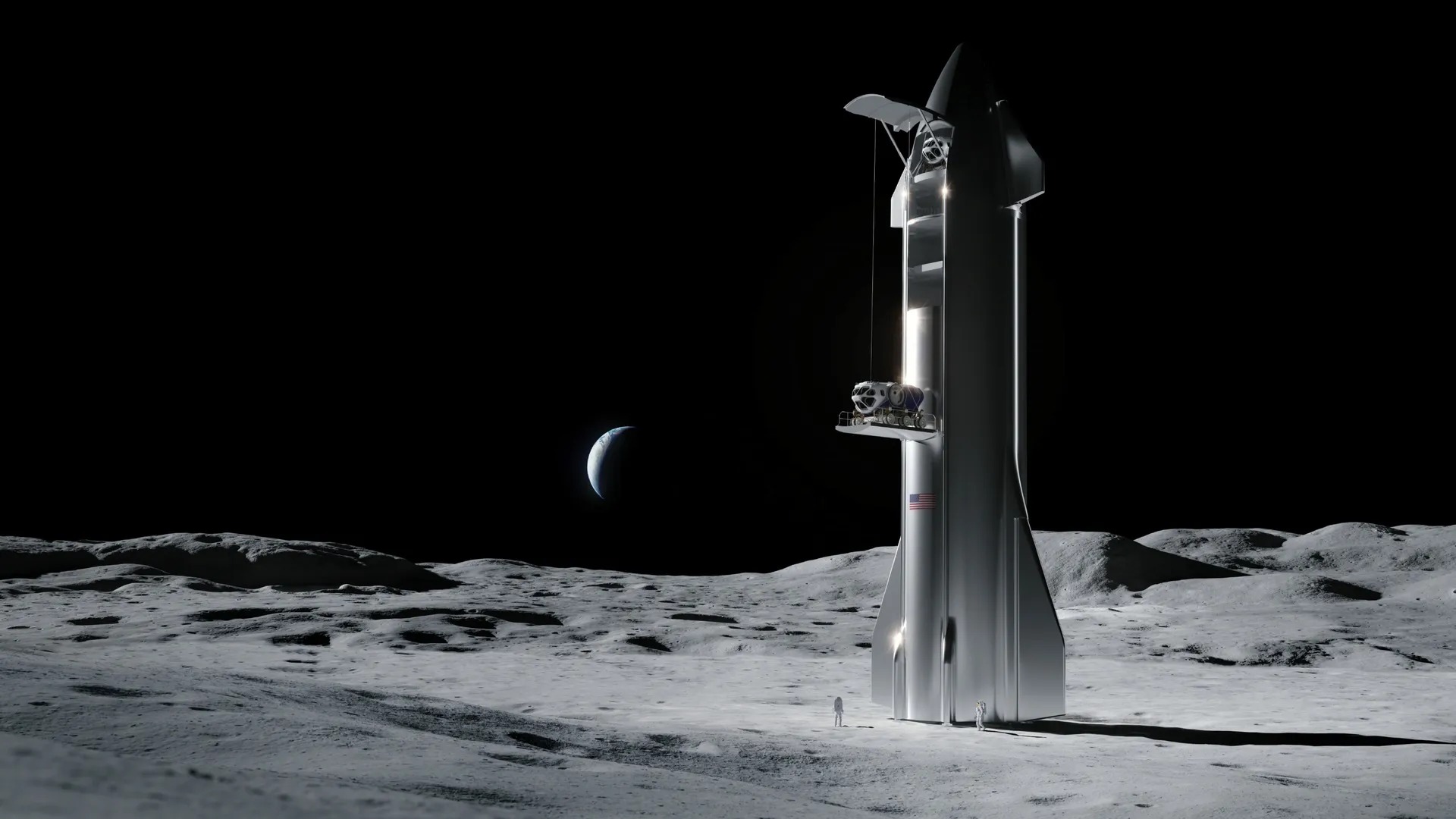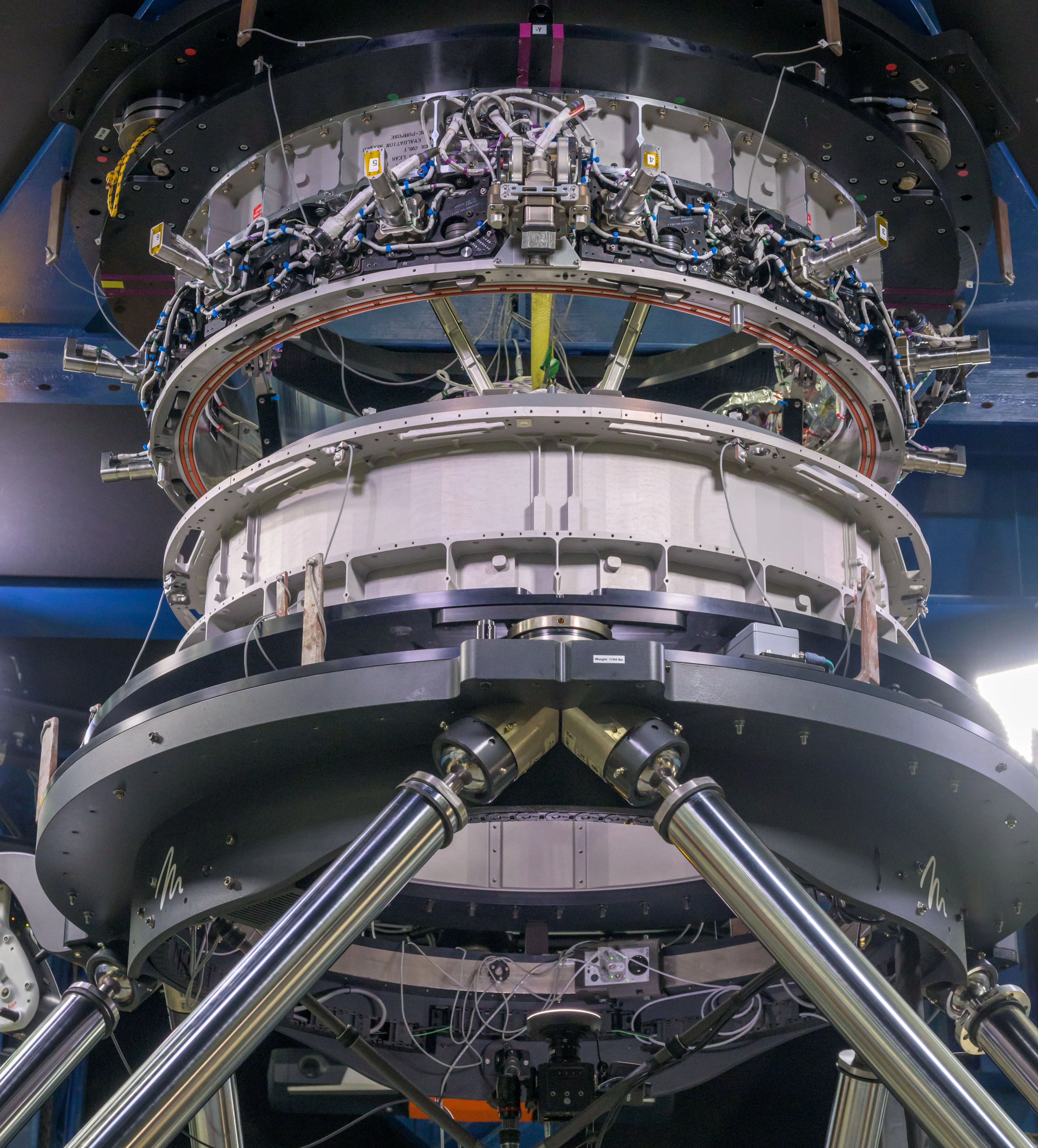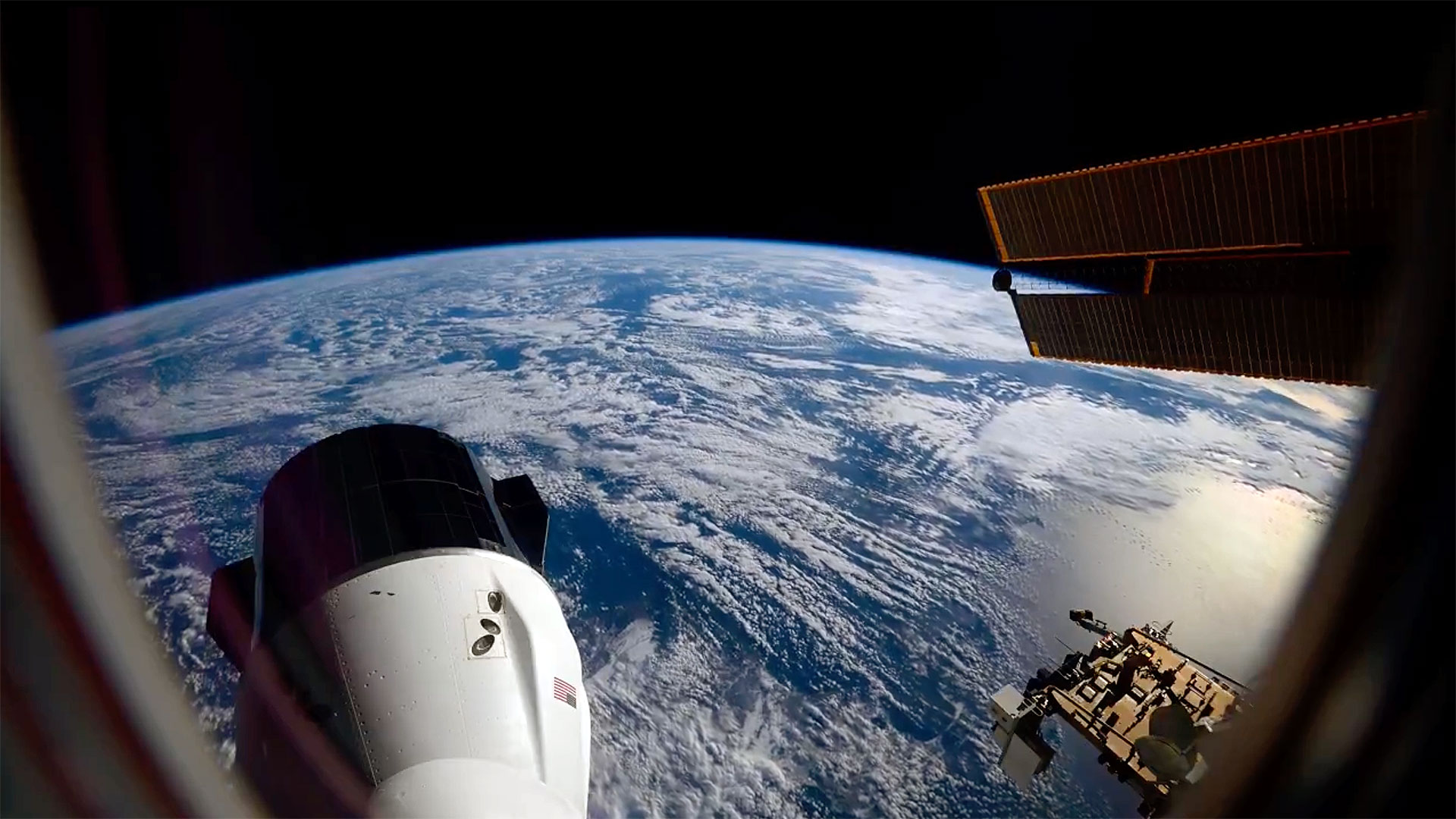SpaceX Starship docking system readies for moon missions in tests with NASA

Practice makes perfect, which is especially true for moon missions with astronauts on board.
That's why SpaceX and NASA recently completed more than 200 docking scenarios together with Starship hardware. Starship is the landing system that will bring astronauts to the lunar surface with the Artemis 3 mission, no earlier than 2026.
Engineers at NASA's Johnson Space Center spent 10 days using hardware from the Starship lander and NASA's Orion orbiter (designed by Lockheed Martin) at "various approach angles and speeds," NASA officials said in a release. "These real-world results, using full-scale hardware, will validate computer models of the moon lander's docking system," agency officials wrote on Wednesday (Feb. 28).
Related: NASA astronauts test SpaceX Starship elevator for future moon landings
The Artemis 3 moon landing requires two spacecraft: the Orion capsule, which will ferry the astronauts to lunar orbit, and the Starship lander, which will send the astronauts to the moon's south pole. The agency eventually aims to create a permanent settlement in this region to take advantage of its potential water ice, which would be beneficial for fueling and other mission needs.
The testing put Starship into the active docking role, with its hardware being a "chaser" to the Orion target docking system, NASA officials explained. Testing was meant to ensure SpaceX's soft capture system could extend to Orion, while Orion's passive system stayed retracted. The two hardware pieces join through "latches and other mechanisms," according to the agency.
While Starship has not yet made it to Earth orbit, its lunar docking system has a lot of flight heritage: it's based on the Dragon 2 docking system used for International Space Station missions. On future missions following Artemis 3, Starship will dock, alongside Orion, with NASA's Gateway space station for astronaut transfer.
Breaking space news, the latest updates on rocket launches, skywatching events and more!
SpaceX was initially chosen as the winner in 2021 of the Human Landing System (HLS) contract for the NASA-led Artemis program, which intends to bring a coalition of nations to the moon's surface under the Artemis Accords. NASA at first said it was planning on selecting multiple vendors, making the sole-source award a surprise.
Blue Origin and Dynetics, other companies competing for the opportunity, filed protests to the Government Accountability Office and cited "flawed acquisition" for the program as well as "issues and concerns" with the award process. The GAO turned those protests down and, in its detailed rationale released that August, said it found no "competitive prejudice" in NASA's decision. The U.S. Senate, however, directed NASA to select a second company in October 2021, and the agency eventually went with Blue Origin for its Blue Moon lander system.
Starship made two test flights in 2023 in an attempt to reach Earth orbit, but neither were successful. The most recent SpaceX-led investigation into the November launch attempt was closed by the Federal Aviation Administration this week, and SpaceX is now working on the launch license for its third attempt.
The Artemis 3 landing, along with the Artemis 2 round-the-moon mission which will have astronauts onboard as well, was delayed in January due to several technical issues that included Starship delays. Artemis 3 will now land in 2026 at the earliest, a year later than planned, while Artemis 2 is launching nine months later in September 2025.
SpaceX's progress with Starship has been a concern for NASA for quite a while. NASA associate administrator Jim Free said in June 2023, for example, that SpaceX will need to finish "a significant number of launches" successfully before the agency gives the green light for Artemis.
In its Tuesday update, NASA officials noted SpaceX has finished "more than 30 HLS specific milestones" regarding hardware ranging from generating power and developing a guidance and navigation system, to mechanisms for propulsion, life support and protection from space's harsh environment.

Elizabeth Howell (she/her), Ph.D., was a staff writer in the spaceflight channel between 2022 and 2024 specializing in Canadian space news. She was contributing writer for Space.com for 10 years from 2012 to 2024. Elizabeth's reporting includes multiple exclusives with the White House, leading world coverage about a lost-and-found space tomato on the International Space Station, witnessing five human spaceflight launches on two continents, flying parabolic, working inside a spacesuit, and participating in a simulated Mars mission. Her latest book, "Why Am I Taller?" (ECW Press, 2022) is co-written with astronaut Dave Williams.

